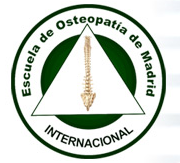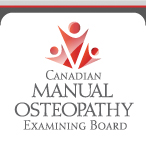
8:31

Daniel Enriquez de Guevara
The Advantages of Receiving Physical Therapy After Surgery or a Stroke

Physical therapy helps restore as much of your physical function and skills as possible, like walking and range of motion, after stroke or surgery. Rehabilitation for postoperative and stroke patients incorporates exercises with and without exercise equipment, manual manipulation and the use of pain-reducing and muscle-stimulating technologies, according to Unlimited Performance Rehabilitation and Sports Medicine. Therapists tailor recovery programs to your individual needs, lasting as long as you need therapy.
Postoperative physical therapy is an integral part of recovery. Physical therapy speeds recovery in any surgical procedure associated with breast cancer, according to Gren Clark of Southeast Physical Therapy. Physical therapy reduces your risk for developing problems after surgery. Therapy reduces or prevents lymphedema, or swelling of the arm caused by blocked lymph nodes, which may occur after mastectomy.
Physical therapy strengthens your muscles to increase your mobility. For example, a physical therapist will focus on your leg strength after hip surgery and make sure your upper body is strong enough to use a walker. Your physical therapist will assist you in weight training and using other types of equipment to improve your strength after stroke or surgery.
Physical therapy departments contain sophisticated equipment not found elsewhere, like heated aqua therapy pools, whirl pools, parallel bars and transcutaneous electrical nerve stimulation units, or TENS units. These machines enhance other therapies, like massage and range-of-motion exercises. Physical therapists receive extensive training to use this specialized equipment to keep your therapy progressing at a safe and rapid pace.
Physical therapy addresses the special problems you may face after suffering a stroke, like partial or total paralysis on one side of your body, balance problems and foot drop. Exercise focuses on strengthening each action you typically perform each day, like raising your hand to your mouth or getting out of bed. This well-focused repetition is the most important aspect of any physical therapy for the stoke patient, according to the National Institute for Neurological Disorders and Stroke. Physical therapists will teach you how to use assistive devices like walkers and canes.
Range-of-motion exercises reduce pain and stiffness and help you regain all the motion you used to have in your arms or legs. Range of motion refers to the degree you are able to move. If you have just had a stroke, you may not be able to move your arm and leg on one side of your body. The physical therapist will perform passive range of motion exercises in which he moves your arm, legs, fingers and toes for you. As you regain strength and control over your limbs, he will teach you to use active range-of-motion exercise.
Physical therapy gets a patient out of bed after his stroke or surgery. Many patients feel depressed after having a neurological event or an operation, and staying in bed only worsens the depression. Physical therapy presents an opportunity for the patient to overcome his illness or injury, in addition to decreasing pain, stiffness and paralysis.
Read more: http://www.livestrong.com/article/469666-the-advantages-of-receiving-physical-therapy-after-surgery-or-a-stroke/#ixzz22sIDTeea
 Physical therapy helps restore as much of your physical function and skills as possible, like walking and range of motion, after stroke or surgery. Rehabilitation for postoperative and stroke patients incorporates exercises with and without exercise equipment, manual manipulation and the use of pain-reducing and muscle-stimulating technologies, according to Unlimited Performance Rehabilitation and Sports Medicine. Therapists tailor recovery programs to your individual needs, lasting as long as you need therapy.
Physical therapy helps restore as much of your physical function and skills as possible, like walking and range of motion, after stroke or surgery. Rehabilitation for postoperative and stroke patients incorporates exercises with and without exercise equipment, manual manipulation and the use of pain-reducing and muscle-stimulating technologies, according to Unlimited Performance Rehabilitation and Sports Medicine. Therapists tailor recovery programs to your individual needs, lasting as long as you need therapy.









 Master PCMH Criteria with Upcoming Webinars
Master PCMH Criteria with Upcoming Webinars







 The American Osteopathic Association (AOA) is the representative organization for the over 70,000 osteopathic physicians (DOs) and 18,000 osteopathic medical students in the United States. The organization promotes public health, encourages scientific research, serves as the primary certifying body...
The American Osteopathic Association (AOA) is the representative organization for the over 70,000 osteopathic physicians (DOs) and 18,000 osteopathic medical students in the United States. The organization promotes public health, encourages scientific research, serves as the primary certifying body...










 8:31
8:31
 Daniel Enriquez de Guevara
Daniel Enriquez de Guevara













.jpg)


















0 comentarios:
Publicar un comentario